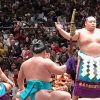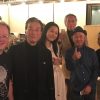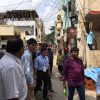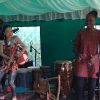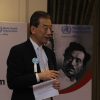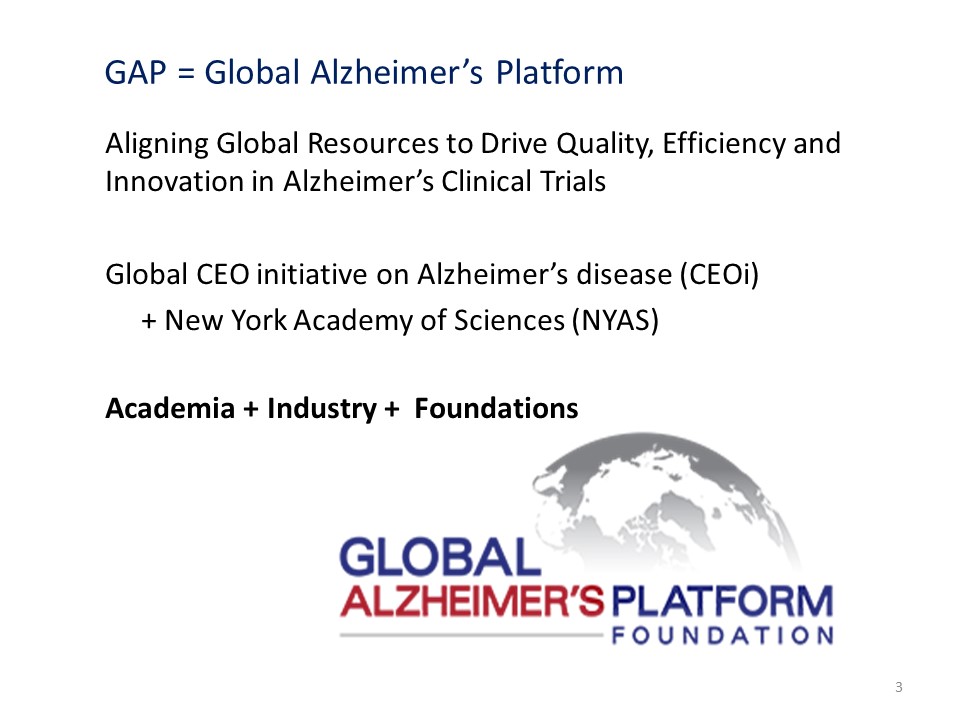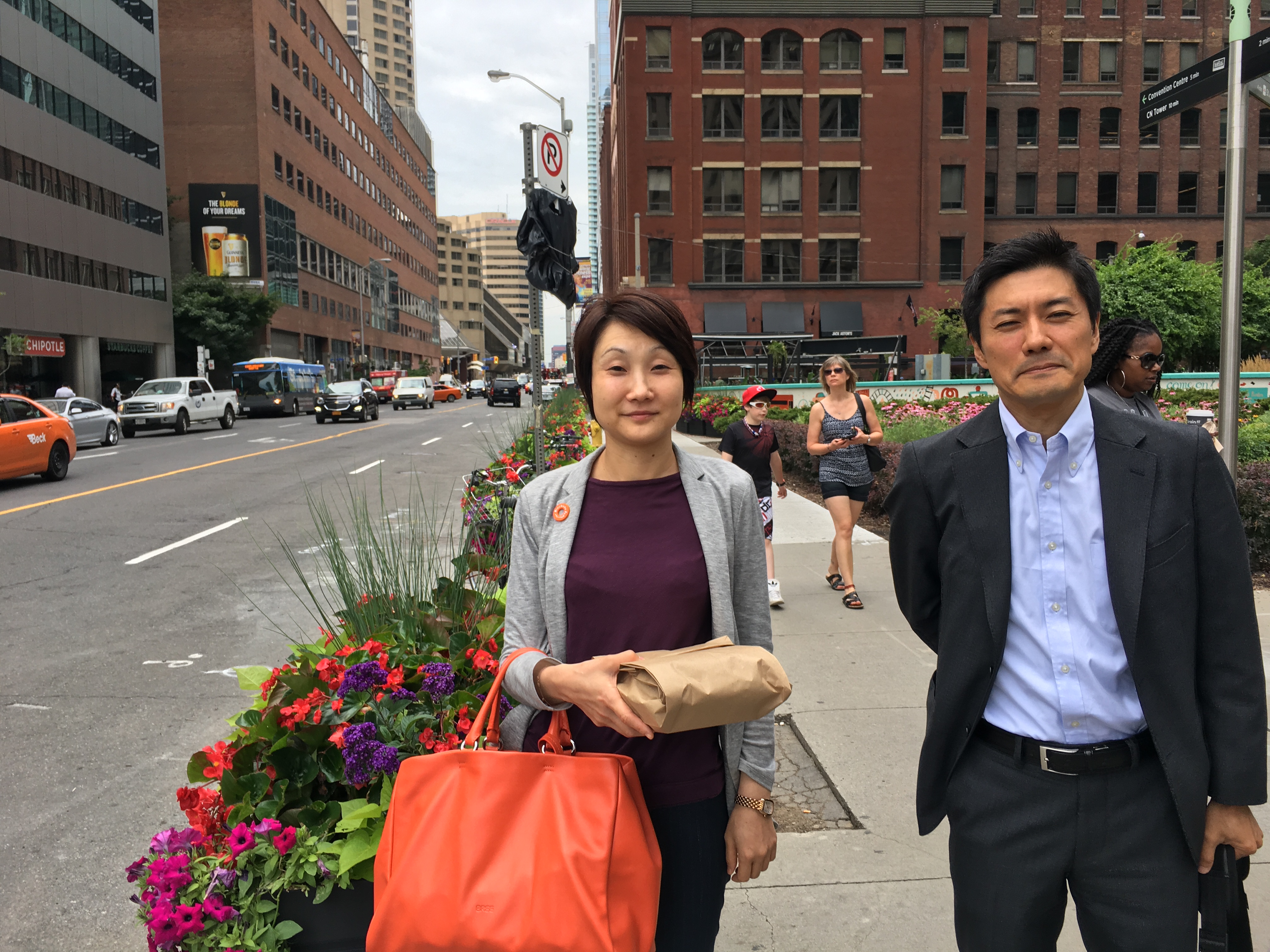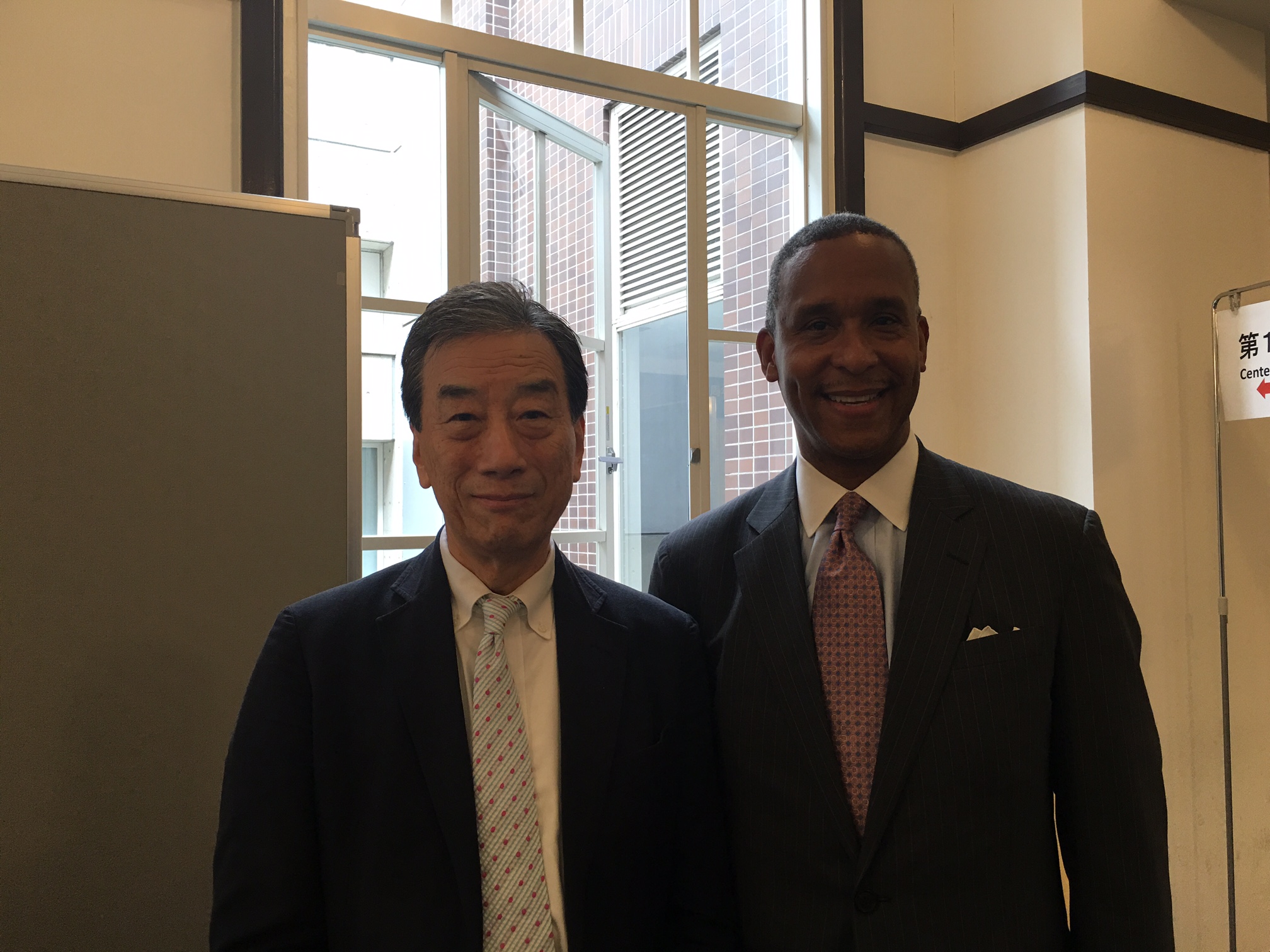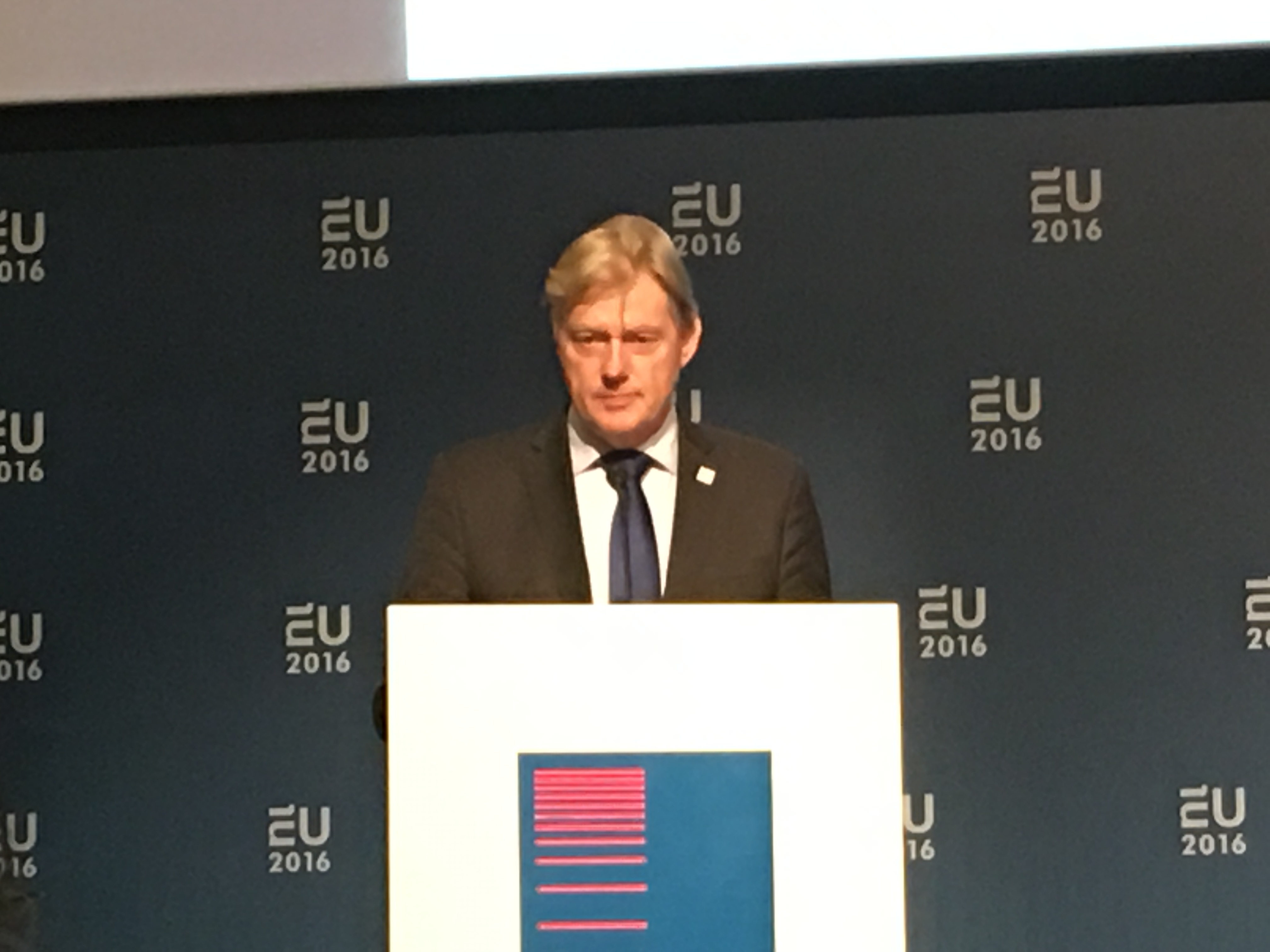I participated in the event, “The Role of the Private Sector in Global Health Security” (Session 2: Facilitating innovation? how to create better environments and systems that support new solutions for global health challenges), at Chatham House on Sep. 28th.
A Busy Start to 2017
A slightly late Happy New Year to everyone!
The new year began with holidays until the 3rd, followed by three days (4th~6th)of courtesy calls to all the people I have had the opportunity to work with, and again the weekend from the 7th to the 9th.
Whenever I have such extended periods of rest, I read a lot to pass the time in a meaningful way, but I also ended up becoming a bit tired of resting.
While I was unwinding over the long weekend, the HGPI team was very busy with the pressured stages of drafting a policy proposal to the Government and to further the World Dementia Council Global Team. Inviting guest speakers, greeting colleagues and fellow organizers, constant updating and correspondence regarding progress. One of the team members at HGPI even travelled over the New Year’s holidays, to London and back, in 3 days.
Then, my first seminar of the new year at the HGPI, which has by now become something of an established tradition. I would also like to thank everyone who attended.
Followed by a farewell reception for His Excellency Bruce Miller, the Australian ambassador, and a New Year’s reception at the Canadian Embassy. I was also very fortunate to get tickets to the January Grand Sumo Tournament in between, so fortunate that I went two times!
And then, New Year’s Celebrations at SafeCast. This organization is a peerless example of Citizen Science, a movement that is not only limited to Fukushima, or to Japan, but is spreading across the world at a rapid pace, as people seek more trustworthy sources of information. Even the IAEA is a fan.
I also received a lot of young people who wanted to talk with me to discuss their plans to start something new, and nothing pleases me more than providing the impetus for something ambitious.
And all the while, I wondered what sort of year 2017 will be. A bit worrisome, if the inauguration ceremony of Mr. Trump in the U.S and the rise of ‘post-truth’ is anything to go by.
I am also doing my best recently to be active on Facebook.
So dear friends and readers, I would like to wish you all the best for the year to come and do keep in touch!
Meetings, A Lot of Meetings!
My schedule was crowded from the end of September till the beginning of October. I had the meeting of the board of directors of the Okinawa Institute of Science and Technology, a reunion in Tokyo with the President of UCLA Dr Gene Block, followed by the STS Forum in Kyoto (summary of my session is here. where we heard of the news of the Nobel Prize for medicine being awarded to Dr. Osumi.), and then back to GRIPS to attend a seminar by Dr. Colglazier, former Science and Technology Adviser to the U.S Secretary of State.
Next, I flew to Hyderabad via Singapore to chair a meeting of the Board of Directors of the GHIT Fund. We visited some local medical facilities, where I observed and learned a lot of things that may prove useful. It was my first visit to Hyderabad so I had no previous point of reference to compare it to, but recalling my visit to New Delhi ten years ago, I could feel more energy in the air, and the infrastructure was vastly better. I also saw a lot of construction work going for roads and new metro (mass-transit) system.
Although there is still a long way to go before medical facilities are on par with other countries, there are some note-worthy initiatives in place. ASHA, for example, is a bottom-up initiative to ensure that health services are in place even in remote places of India. Along with improvements in infrastructure, clean water supply and telecommunications, this initiative has gone a long way in raising the general standards of health and medical services. I think that these improvements herald a new chapter in public health in India.
On the last day, we had dinner reception at the Taj Falaknuma Palace (1). Incidentally, this hotel has the world’s longest dining table which can seat 101 people. It was a truly luxurious experience.
I felt that there was a stark contrast from what I had been seeing during our field visits. This palace was filled with reminders of a bygone era when the British Empire ruled a large part of the world. I had the feeling that I was being allowed a glimpse into a past when the British were able to rule over a large empire.
Later that night, I took a flight back to Haneda, again via Singapore.
There were also a lot of other meetings, appointments, seminars and lectures, making for a hectic 2 weeks.
Participating in the TICAD6 in Nairobi – 3
After the Noguchi Hideyo Africa Prize workshop, I went to a nearby hotel where a conference on Non-communicable diseases (NCD) was being held. I made good on a promise to deliver the keynote speech. After this talk, there was a panel discussion, which I had to leave halfway through (the audience was made up of mainly medical professionals, and I received emails congratulating me on the unexpected but important nature of my talk) to get back to the Hilton in order to attend the GHIT meeting in the afternoon.
Here at this GHIT Fund meeting, Dr. Greenwood and Dr. Coutinho, recipients of the Noguchi Africa Prize, were also on stage, making the proceedings very lively. I arrived when the panel was already wrapping up, and after the closing words, we headed out to the poolside of the Hilton Hotel where the GHIT Fund had prepared a reception.
The special artist invited to perform during this reception evening was Anyango. She is a young Japanese woman who went to Kenya to learn more about the particular African music and instrument that had so captured her imagination. After years of hard work in an apprenticeship, she became proficient enough to earn the right to play instruments, a right traditionally held by men.
She had already been on worldwide tours to promote her music, with several albums to her name. When I had inquired to her managing office in Tokyo, they told me that she was scheduled to be in Kenya during the later weeks of August, which was perfect timing, so I put in a request for her to perform.
Anyango performed with a local band, and as the performance progressed, some of our guests from African contries, went from singing together to dancing, making it a memorable evening.
Recently, she was featured in a TV program in Japan.
After the reception, I spent some time unwinding with the people of the Cabinet Office over dinner, a small gesture of thanks for all the hard work that we had put into the Workshop. I also met some of the delegates from Japan.
It was a nice ending for an enriching and thought-filled time spent in Nairobi.
Participating in the TICAD6 in Nairobi – 2
As I wrote in my earlier post, the symposium of the Hideyo Noguchi Africa Prize, where I am the chair, was held at the Nairobi Hilton on the morning of 26th August.
The symposium was attended by three of the past four recipients of this award from the years 2008 (1st) and 2013 (2nd). Indeed, we relied heavily on the help of Dr. Miriam Were, who was one of the first recipients of this award, to get the cooperation of WHO-AFRO in organising this workshop.
Also, given the nature of the Hideyo Noguchi Africa Prize and its emphasis on public health of Africa, I made a special request Dr Were to invite young people who work in this area.
One of the defining features of the Noguchi Africa Prize is the emphasis on both public health and epidemiology and in medical research relevant in the African continent,. Thus, past laureates include people like Dr. Were from Kenya and Dr. Coutinho from Uganda. These two in particular are wonderful role-models for aspiring young African people, and are held in high esteem. Another recipient of the award, Dr. Peter Piot, was unable to attend for personal reasons that are elaborated in the link to my address.
The venue could seat around 100 people, and was packed to the maximum with some people even standing. The energy in the air was palpable. My address was followed by a speech by a representative of the Health Minister of Kenya, a congratulatory speech by Mr. Shiozaki, the Japanese Minister of Health, Labour and Welfare, and then by a representative of the WHO-AFRO Director.
We also showed a 6-minute video about the Noguchi Hideyo Africa Prize that was in English but simultaneously translated into French, with Japanese subtitles. This was followed by a keynote presentation by Dr. Were, and then a special Karate performance by the young people of the UZIMA Foundation created and led by Dr Were.
After a brief break, we had two panel discussions moderated by Dr. Greenwood (a laureate of 2008) and Dr. Coutinho (a laureate of 2013, both who infused the discussions with their passion for their people’s health as their major work, leading to a lively discussion.
The Workshop started at 8:30 in the morning, and began by one hour session with abut 20 young African hesalthcare leaders. At the end of engaging two panel debates, one each from the young health leaders wrapped up the talks by providing a concise overview. The abilities of these students shone through and wowed the audience.
The whole event was wrapped up by a speech by Ichiro Aizawa, Head of the Japan-Africa Parliamentary Representatives’ Association.
I was impressed by the evergreen enthusiasm and determination of the laureates that seemed to flow freely for the benefit of everyone. Perhaps this passion is what is most important character which leads to after many years, world-changing work.
More will follow in part 3.
Meeting about Dementia at Todai, and Heading to Nairobi the Same Night
During the afternoon of the 23rd of August, I attended a meeting announcing that Japan would be joining the ‘A4’, a clinical research programme spearheaded by the US,aimed at operationalising the use of diagnostic imaging for the early detection of Alzheimer’s and then monitoring for a further four years. This announcement was made by Dr. Iwatsubo of Tokyo University’s Graduate School Faculty of Medicine, at the Ito Memorial Hall in Todai.
I made the keynote speech about my participation in the World Dementia Council. The Ito Memorial Hall where I gave my talk was packed to its capacity of 200 people, and my talk seemed to rivet the audience’s attention.
I presented about the founding and subsequent developments of the WDC, also touching upon public-private partnership initiatives such as the EU’s EPAD and the GAP Foundation from the US. The main message that I emphasised a lot was that such platforms with a global outlook are something that we desperately need in Japan. I also tried to describe what the implications of such a platform would be.
It will be a big challenge to replicate in Japan the successes of the multi-stakeholder platforms I mentioned in the talk, but at the same time, I feel enthusiastic about meeting this challenge head-on.
A few days later, I received an email from the consul of the British embassy thanking me for the succinct explanation of the UK’s initiative in setting up of the WDC during the 2013 G8 Summit.
In Toronto Again!
Its already the third time that I am visiting Toronto this year. This time, it was to attend a meeting of the World Dementia Council, the first meeting after being re-formed at the 2013 G8 Summit held in the UK.
This date was arranged to follow the week-long Alzheimer’s Association International Conference that was held a few days earlier in the same city.
As soon as I checked in at the hotel, I headed out to the ballpark where the local team the Toronto Blue Jays were taking on the San Diego Padres in an MLB game. The stadium was almost full, meaning that the only seats available were the very steep outfield (500 level) seats. I had to leave the game at the top of the 7th inning. When I opened the morning paper the next day, I found that the game had not only gone to the 12th innings, but that they had overcome a 2 run deficit to post an improbable and dramatic walk-off win. The home crowd must have gone wild! You can relive the game through the following links (link 1, link 2).
Returning to topic, at the first meeting of the new independent World Dementia Council, there were discussions of several recommendations for the agenda, a brief summary and an outlining of the transition process (1).
The WDC was till recently a council created under the purview of the UK government. This was the first meeting as an independent council, yet there was very little discussion about how the new WDC would seek to enact changes that would help distinguish it from its predecessor. There was a general emphasis of discussion about such strategic intent, and I provided my input based around these observations. I think that this repositioning from UK Government to an independent one will be more difficult than imagined, but one that will nevertheless lay the foundation for the identity of this very important group in the years to come.
As one of the nations with the highest levels of population ageing, how will Japan act in the coming years. At the G7 held in Ise-shima in May, A Vision for Global Health was outlined, and section 2-2-2.5 deals addresses the issue of dementia. Similar recognition is required at the G7 Kobe Health Ministers’Meeting. For the ‘dementia tsunami’is something that we can predict with a high degree of certainty.
I met a lot of people here including John Dirks from the Gairdner Foundation, and Peter Singer, CEO of Grand Challenge Canada, and also had the opportunity to meet Consulate General Nakayama at the embassy.
I also mention Dr. John Dirk’s name here to celebrate the fact that the Canada Gairdner Global Health Award ( one that Dr. Satoshi Omura, Nobel Laureate of 2015, received in 2014) that was started in 2009 has been renamed to honour him ahead of his imminent retirement from the Foundation.
Educational reforms at the University of Tokyo: Where are they headed? Dr. Inui’s Reflections
When compared with the rest of the world, it seems that the higher education reforms in Japan, including those in the world of medicine, have not made much progress.
From around 1980, there have been revolutionary reforms in the field of life science and American and European universities began to undergo major reforms. Some leading examples are the educational reforms at McMaster University and the New Pathway at Harvard University.
Universities in Japan do not seem to understand such changing and new situations but the government has taken some initiatives, conducted under the systematic name of “reforms”. In the 1990s, there was the introduction of graduate universities and the overall reforms of universities, as well as the shift to become independent organizations. However, can it really be said that the higher education has changed fundamentally?
I was at the University of Tokyo from 1983 to 1996 and tried proposing many different suggestions. However, as usual, although many agreed with the bigger picture, they did not agree with the details and finer points. The environment and factors pertaining to medicine has also been changing. I am referring to the “five M’s” that I touched upon in my final lecture of my tenure at University of Tokyo in 1996 and in my keynote speech at the Japanese Society of Internal Medicine (in Japanese).
One of the things I tried at the University of Tokyo was to discuss with Harvard University a way to let students experience the New Pathway. We began this a year before I moved from the University of Tokyo to Tokai University. I gathered the funding for three years. Eight Japanese students and six students and two faculty members from the Harvard School of Medicine came to the University of Tokyo at the end of spring for one week. Students from the University of Tokyo spent one week at Harvard in the autumn.
When I look back on the records and reports from that time, it is clear that the experience was a very positive one with high impact for both of the students, especially on the University of Tokyo students.
In 1996, the second year, the member of the faculty at Harvard who participated was Dr. Thomas Inui. Dr. Inui is a third generation Japanese American and is a pioneer in medical education reform in US.
Afterwards, there were some attempts for reform of medical education at the University of Tokyo. At one of those, Dr. Inui was invited for three months and very critically conducted inspections and interviews, based upon which he wrote the very substantial Inui Report. This was fifteen years ago.
Reflecting upon the time that has passed since then, it cannot be said that there has been effective use or implementation of the proposals. This June, Dr. Inui was invited to the University of Tokyo in order to speak about the “The University of Tokyo medical education after fifteen years.” And he gave a speech as well as served as a panelist. I was also invited to be a panelist.
As expected, there were few participants, only around 25. Unfortunately or as expectedly, professors were absent except for Dr. Hashimoto and Dr. Shibuya, who are in the field of public health and have earned their PhDs at the Harvard University School of Public Heath (which is quite a feat).
Dr. Inui’s speech is entitled “Curriculum Stagnation at Todai School of Medicine- A Sober Analysis.”
It was a passionate speech from the heart that pointed out the great effort that had been poured into creating the proposals, made possible by getting the cooperation of the dean of the University of Tokyo School of Medicine. However, most have not been implemented or developed further, while the world continues to change all around.
I share this criticism, particularly when I see the reality of the higher education in Japan and other universities around in the changing world, especially the many rising universities in Asia.
The Annual Meeting of the Japan Chapter of the American College of Physicians in Kyoto
More→ https://ja-jp.facebook.com/ACP-Japan-Chapter-174339349295272/
As I have done for the past few years, I participated in the annual meeting of the Japan Chapter of the American College of Physicians (1, 2) .
It was another full and lively program this year (1). The Chairman of the American College of Physicians attends the meeting every year and this time, Dr. Weyne Riley also participated. We were both moderators of one of the sessions and saw eye to eye on many things. We enjoyed watching the presentations of the students and residents and giving of awards.
This year, there were young people led by Prof Shibagaki of the St. Marianna University School of Medicine, who actively participated in much of the program.
My old friend, Dr. Inui also came to the meeting. Afterwards, he was to give a lecture at the University of Tokyo Education Center, which I also plan on attending.
Dr. Inui is the person who has been very passionate leader for years about the future of medical education and I asked him to come to Tokai University School of Medicine, the day before I was to start my deanship at Tokai University on June 30th, 1996. Quite a long time ago, 20 years, a fond memory of our professional career.
To Amsterdam for a Conference on Dementia
After the end of splendid Golden Week with beautiful weather, I left for Amsterdam.
This year, the EU Presidency is held by the Netherlands. This conference was hosted by the Netherlands in order to showcase and share the measures taken for dementia by the Dutch. Since being appointed as a member of the World Dementia Council (WDC) , which was formed at the G8 Summit hosted by the UK in 2013, I have participated in many such activities and have written about them on this blog.
Three months ago, at the conference in London, the WDC was reformed to become independent from the UK government and to become a truly global council. I participated in this conference and continue to be a member.
The Chair of this newly reformed council is Yves Joanette and the Vice-Chair is Raj Long. The last time I saw them was at the WDC meeting three months ago. The transition to the new, global Council has been smooth and is making progress, especially due to the enthusiastic efforts and support of the secretariat, temporarily transferred from the UK Department of Health.
The British government regards dementia as one of the most significant problems in the world and raised the issue at the G8 Summit, pouring in roughly 100 million US dollars in funding and raising another 100 million US$ from other relevant organizations. I am always amazed by the dynamism that is an important part of the fabric of British politics and governance, its foreign policy as well as universities and scientific research, in spite of its problems with the EU and national politics.
The last time I visited the Netherlands was last year in June, when I attended the conference at the Hague. In the meantime, I’ve met with the Dutch State Secretary for Health, Welfare and Sport, Martin van Rijn at a seminar held at the Dutch Embassy, during his visit to Tokyo.
The conference venue was the Europe Building. The venue was characteristically Dutch, in the sense that the venue was not particularly flashy but the program content was well thought out and was moderated effectively. The conference kicked off with a speech by Martin van Rijn and the panels were moderated by Member of Parliament, Marijke Vos (donning a red dress in the photograph above). These two days have been very informative.
Japan will host the G7 Summit in Ise-Shima in May and I often get asked many questions about how dementia will be approached in the Summit. There will be many activities by organizations dealing with dementia.
Tulips are currently in full bloom in The Netherlands. I had the chance to visit the nearby National Maritime Museum. It is worth making a visit.
In the afternoon of the second day, the people of DUJAT (Dutch & Japanese Trade Federation) invited me to dinner. It turned out that the Managing Director of DUJAT and a medical doctor who was also as guest at the dinner had mutual friends of me from a long time ago and that the doctor joined my teaching sessions before. It was a very fun dinner.
After my stay of three days and two nights, I returned to Schiphol Airport. I came across this very moving photograph of a whale and people, which won first place in a contest, and I share this image with you here.
My next stop: Oslo.



